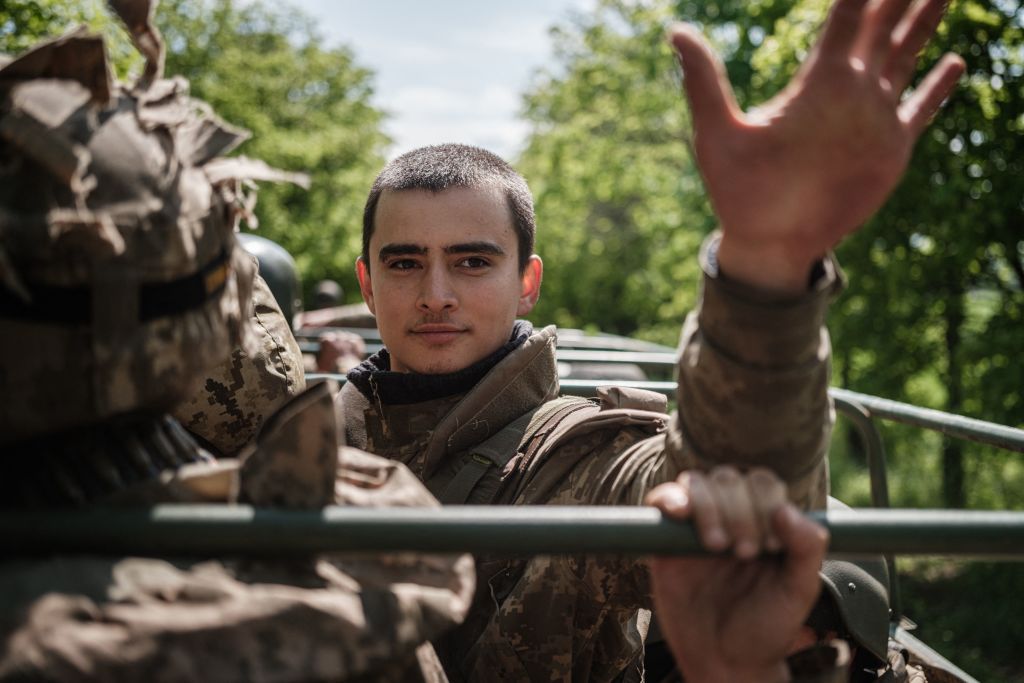The climactic battle for Ukraine is being fought in the east, on the dangerous, open terrain of the Donbas. Since it will be won with heavy, long-range firepower, Russia ought to have a huge advantage. After all, it has spent decades building a military meant to overwhelm its enemies with vast numbers of tanks, troops and artillery, fighting on terrain just like this.
But even in these favorable conditions, Moscow’s plans aren’t working out. The Ukrainians may lack superior numbers, but they could very well win back most of the territory Russia has occupied since 2014. The Ukrainian edge? Their mobile forces, determined fighters, smart leadership, superior intelligence and targeting, and, coming soon, a surge of heavy weapons, arriving after months of delay.
Most of the weapons and real-time intelligence are coming from America, supplemented by some from NATO allies, such as Britain’s state-of-the-art Starstreak missile. These modern weapons will be crucial in the upcoming fight because they allow Ukrainian forces to take out enemy tanks and artillery from positions beyond the reach of Russian counter-fire.
The key now is getting these weapons to the battlefront (a complex logistical task, performed under enemy fire) and making sure Ukrainian fighters know how to use them. The operators’ training is happening now and the supplies are moving across hundreds of miles in Ukraine, undeterred by Russia’s attacks on road and rail junctions such as Lviv.
Even with these new weapons, it’s still guesswork as to whether Ukraine can actually defeat the Russians. So let me guess: Ukraine will win. It will be a hard fight, and the victory may be incomplete. But the odds now favor Ukrainian victory for several reasons.
The Russian army, which already demonstrated its deficiencies in the fight for Kyiv, is now badly damaged and low on morale. It is essentially stalled in its latest push to take more territory and take out Ukrainian formations by moving west from areas it currently holds in Luhansk and Donetsk (the Donbas region). That drive would have been supplemented by Russian forces around the northeastern city of Kharkiv, which has short logistical lines because it is close to the Russian border. But that move failed to take the city. Its forces are being driven back from surrounding territory, and utterly failed to move south and encircle more Ukrainian forces.
Across the whole eastern region, Russia’s latest push has achieved only modest gains. And even those are tenuous. When Russia redeploys its forces after taking territory, Ukrainian fighters often take it back.
Air power should have helped Russia, but it didn’t. Russia has never established air superiority despite a much larger air force. Ukraine’s skies are still contested space. That’s especially impressive given that the US has not supplied Ukraine with modern air defense systems, and denied them the Soviet-era MiG fighters held by NATO members that were once inside the Warsaw Pact.
Russia’s aviation problems go even further. To fight effectively, their air force should be tightly connected to ground operations. But it isn’t. Put bluntly, Russia cannot conduct modern, combined-arms warfare, which melds air power, cyber resources, battlefield intelligence, tanks, artillery and drones. That kind of combat is the backbone of NATO strategy, and Ukraine is using it effectively, even though it is not a member.
Ukraine is also following US/NATO procedures in another way. Their lower-level commanders and non-commissioned officers (NCOs) are given considerable authority and flexibility. They can shift tactics in the midst of battle. They don’t have to follow their senior commander’s detailed instructions as long as they pursue the objectives he laid out.
Russia’s operational doctrine is far different and far less effective. It relies on top-down command, which is brittle when faced with unexpected setbacks. Since lower-level officers can’t correct tactical problems, generals and colonels (and even the military’s overall leader) must travel to the front to fix them. When they do, Ukrainian drones and snipers successfully target them.
These defects are profound, and they are baked into the Russian army. They cannot be fixed quickly, and certainly not in the midst of war. Of course, Russia’s top planners can correct strategic errors, such as launching too many major battlefronts with too few resources. Remedying that mistake is what they are doing now by concentrating on eastern Ukraine.
Now that Moscow is focused on the Donbas, what’s the plan? The goal, apparently, was to encircle Ukrainian forces in the region, block their resupply (as they have done in Mariupol) and then kill or capture them. But once again, they are failing. Only a week ago, retired US generals were drawing maps on TV, wondering whether Russia would try for a deep encirclement (covering lots of Ukrainian terrain and troops) or a shallow one (easier to pull off). Would they even try to go as far as the Dnieper River and cleave the country in two? Today, those aspirations are dying and the more ambitious ones are dead. Even “shallow encirclement” seems beyond Russia’s reach, thanks to Ukrainian resistance. Russian forces have made only small gains and haven’t sustained momentum. They’ve fallen far short of encircling an enemy army.
Although this stalled advance might look like a stalemate, it is actually far worse for Russia. Why? Because it shows their forces have been stopped before Ukraine receives its heavy weapons from the US and NATO. When those weapons finally arrive, they will wreak havoc on Russia’s forces.
Those weapons should have arrived in Ukraine two months ago, but the Biden administration balked at sending them for fear of provoking Putin. US policy has changed over the past two weeks, partly because of Russia’s war crimes, partly because Russia hinted it wanted to keep going beyond Ukraine and partly because the fight for the Donbas is crucial to the war’s outcome and can only be won with heavy weapons. It was also increasingly clear that Ukraine has a real chance of winning that fight, weakening Russia and diminishing the threat it poses to the United States and Europe. The danger, of course, is that a cornered, losing Kremlin could resort to weapons of mass destruction.
The new equipment should reach the front over the next two or three weeks, just as Ukrainian soldiers complete their training to use it. Those weapons include mobile artillery with accurate, long-range firepower, drones with heavier payloads and longer flight times, armored troop carriers, anti-aircraft batteries and vast stores of ammunition.
Their arrival will signal a new phase in the battle for the Donbas. Russia’s tanks and artillery will be as vulnerable to these long-range weapons as they were to short-range ones around Kyiv. Ukrainian forces will be able to pinpoint enemy forces with real-time intelligence from their own drones and US intelligence. Equally important, Ukrainian soldiers can fire from safer distances, beyond the reach of Russian counter-fire.
Russia’s response, as always, will depend on quantity and brutality. They have dumb bombs, dumb command structures, static formations and desultory troops. Lots of them. They can destroy whole cities and kill tens of thousands of innocent civilians. They can obliterate schools, with children inside, and block humanitarian convoys.
But they can’t seem to defeat an army that is shrewd, mobile and determined to defend its country, at least not an army that is well-equipped with modern weapons. The Ukrainians proved their mettle around Kyiv. They are proving it again around Kharkiv and, farther south, around Mykolaiv, which blocks the Russian path from Crimea to the major Black Sea port of Odessa.
Now that Ukrainians are finally getting the heavy firepower they need, they have an excellent chance of recapturing the Donbas.


















